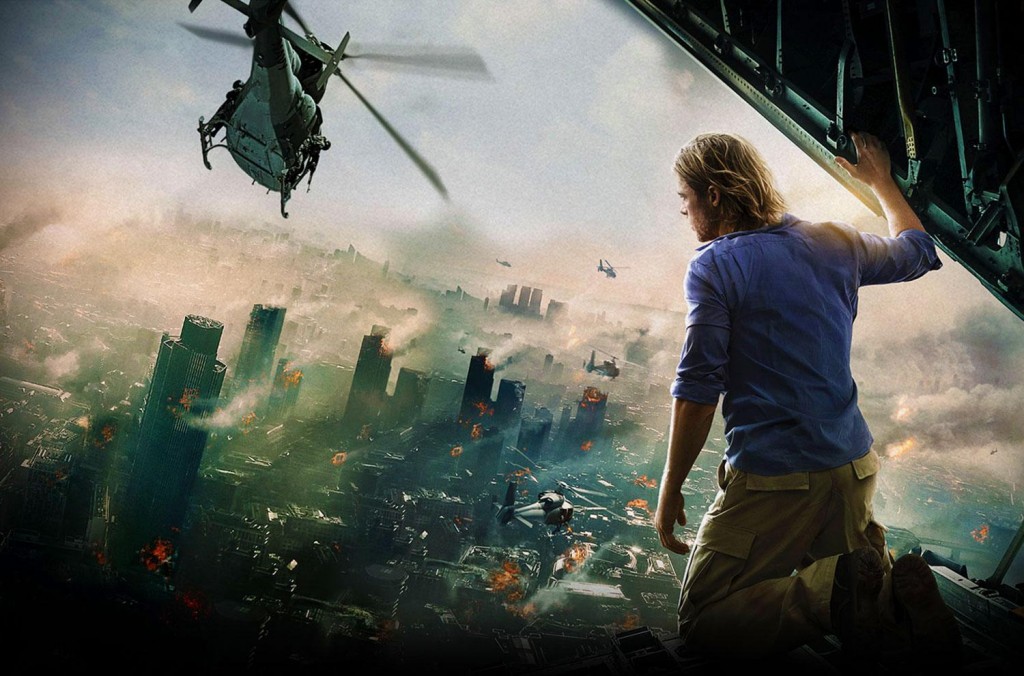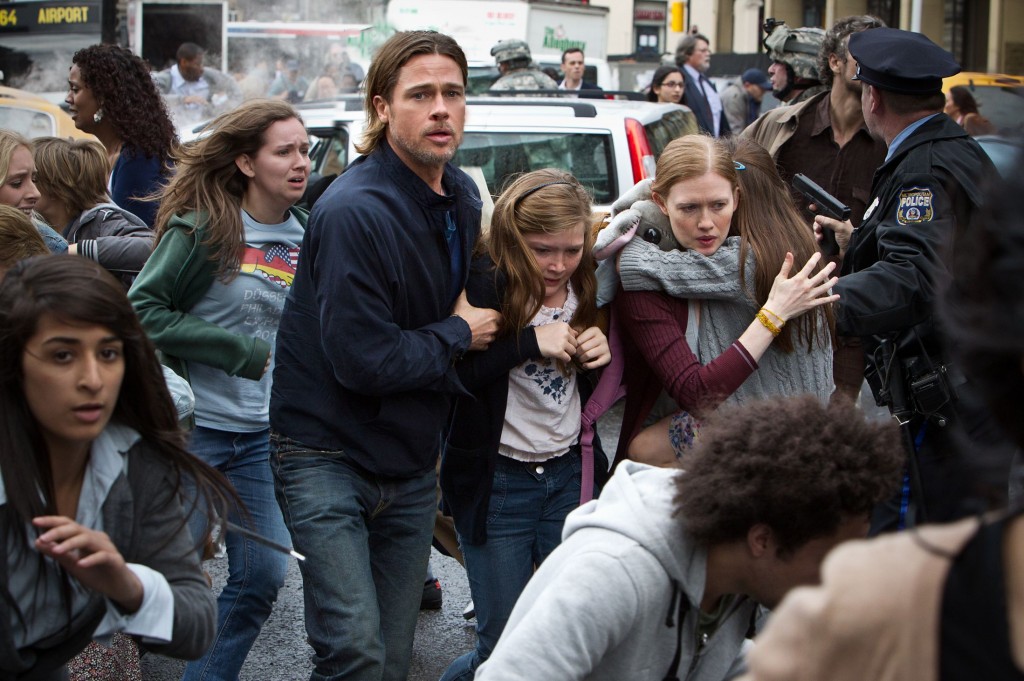

At lot has changed in the past decade. The zombie, once a second-tier movie monster with a relatively small cult following of loyal horror fans, has hit the masses. From “28 Days Later” to “The Walking Dead,” they’ve become bona fide A-list film stars. “World War Z” represents the first mega-budget summer blockbuster zombie flick (based on a hit novel by Max Brooks, no less). And, while it’s definitely flawed, the results could have been much worse.
Truthfully, it seems as though the film is more “inspired” by the book than it is an adaptation. The focus of the story is ex-United Nations employee Gerry Lane (Brad Pitt). After a violent, rapid fast-moving zombie outbreak engulfs the planet, the family man must first deal with the chaos and find safe harbor for his family. Recruited back into action, Lane is also tasked with crossing the globe in an effort to find the source of the outbreak in the hopes of creating a cure.
From this point forward, it’s a travelogue of sorts, with the globe-trotter moving from South Korea to Israel and the UK while attempting to avoid getting bit by massive hordes of the encroaching infected – these zombies carry a virus that seemingly wills its host to pass it on to fresh, uninfected persons through bites.
The visuals are impressive and feature images that even genre fans won’t have seen before. These include staggeringly large-scale sequences of citizens being turned in busy city centers as well as panicked crowds raiding shops and fighting with each other. Audiences will witness mountains of the undead climbing massive structures, lunging themselves from great heights and painfully bouncing off of structures into populated groups, as well as being sucked out of numerous aircrafts. It’s all impressive to witness.

Societal implications, however, are downplayed. A leader in Israel is questioned briefly as to how he predicted the attack and what he knew previously, but the film ultimately abandons any critical exploration of world leaders and their responses to the outbreak. Losing subtext and commentary for general thrills, one assumes, is the price of being an expensive blockbuster. The wall to wall action makes the story a bit choppy at times, too. It’s particularly odd that such a big deal is made about finding the source of the pandemic early, when it ends up being a simple observation that leads to the potential solution.
The final act is something of a jarring contrast to the beginnings of the film, moving the leads from epic outdoor locations to a very small, claustrophobic spot during the final thirty minutes. Amusingly enough, this climax, which follows several characters through an infected wing of a large scientific facility to find one specific lab, is the most effectively tension-filled sequence in the entire film.
And, while I’m not averse to the use of 3D technology, it’s a bit of a nuisance here. The chaotic action scenes feature numerous quick edits and are filmed using handheld camera moves and whip pans. It’s exciting and works well on its own, but not with the extra dimension in play. In fact, it takes the eye far too long to adjust and instead of immersing the viewer, makes the added depth a distraction.
“World War Z” is not a philosophical exercise. It’s a spectacle, pure and simple. It may not be deep, but it is well made, exciting to watch and fast-paced – more than can be said of many summer releases. Here’s hoping it’s successful enough to warrant a sequel that engages the brain as much as it does body.


